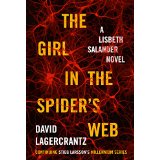Thank you, Stephen King, for being so prolific. I mean it. I don’t know how you keep cranking out these diverse, page-turners. I first saw Joyland staring back at me from the shelves at Powell’s Books. I already had several used books in my arms and wrote the title down in my list of “books to read”.
Then I just kept thinking about it. I mean just look at the cover. I couldn’t get it out of my head. Not for the scantily clad woman, but the colors and the font and the kitsch. It screamed pulp fiction. And then as any of you who read this blog know, Stephen King is on my short list of awesome writers. So, Joyland made it to the front of the queue.
It is a quick read and a nifty little mystery. Devin Jones narrates the story, but in a flashback from forty-five years in the future. So the reader is given an adult perspective on the somewhat poignant, impulsive summer in the life of a twenty-one year old. King captures it brilliantly, noting:
When you’re twenty-one, life is a roadmap. It’s only when you get to twenty-five or so that you begin to suspect you’ve been looking at the map upside down, and not until you’re forty are you entirely sure. By the time you’re sixty, take it from me, you’re fucking lost.
Who can’t relate to that? I’ve definitely concluded my map is upside down but haven’t completing given up yet on finding my way. And, had Devin been writing contemporaneously, we wouldn’t have gotten this perspective which does so much to shape the tone of the book.
Devin, a work-study student at the University of New Hampshire in the 1970s, has secured a summer job working at the Joyland amusement park in coastal North Carolina. On his first day, he and the entire summer workforce, hear from Joyland’s founder, 90-something, Bradley Easterbrook who tells them:
You’ll have interesting, fruitful lives, my young friends. You’ll do many good things and have many remarkable experiences. But I hope you’ll always look back on your time in Joyland as something special. We don’t sell furniture. We don’t sell cars. We don’t sell land or houses or retirement funds. We have no political agenda. We sell fun. Never forget that.
Sounds like someone I know quite well. :) And what a kick-ass, first day of work speech. Like Devin, I thought to myself, how many people can put sold fun for three months on their resumes?
Devin’s girlfriend, Wendy, is working in Boston and shortly into the summer sends him a “Dear Devin” letter. They have been going steady for a couple of years, but haven’t done “It” and aside from not having done “It”, there shouldn’t be much to miss about Wendy. But Devin is twenty-one and just suffered his first major heartbreak, so he doesnt see it like that and it takes awhile to snap back.
The old-timers working at Joyland, including Lane (his mentor), Fred (the general manager), Mr. Easterbrook (the owner), Madame Fortuna (the park’s fortune teller), his two of his housemates, Tom and Erin (also working at Joyland for the summer), and eventually, Mike and Annie Ross (neighbors down the beach), play a big role in Devin’s memorable summer. He learns about a young woman, Linda Gray, who was killed four years earlier on Joyland’s Horror House ride. No one was ever arrested for her murder, though several pictures taken in the park that day show Linda and her boyfriend, the presumed killer. Not a single picture shows the man’s face, though, and eventually the case goes cold.
Several people tell Devin that Linda’s ghost still haunts the Horror House ride, and he is determined to see her. When he, Tom and Erin go on the ride on a day off (they are never posted to work in the Horror House), Tom is the one who sees Linda’s ghost and the image haunts Tom for the rest of his life. Mike Ross, a young boy in a wheelchair who is slowly dying of Duchenne’s muscular dystrophy, warns Devin against digging too deep into Linda Gray’s death. Mike has visions, like Madame Fortuna does — not that Devin believes either of them. But both prove to be correct on more than one occasion. Eventually, Devin enlists Erin to help him solve Linda’s murder, and eventually he does. With a little help from Mike and his warning –”Be careful, Dev. It’s not white.” And though Devin solves her murder, he never actually sees Linda’s ghost. But he sees enough to know that she was real.
Devin’s relationship with Annie and Mike (Annie is Mike’s mother) adds a sentimental touch, and allows Devin to move on from Wendy. Although, like I said, moving on from her should have been a breeze. But, he’s twenty-one. And a guy.
I can’t say enough about this little gem of a book. A sweet (but not syrupy) story, with just the right dash of mystery. Sign me up.
Happy Reading!




